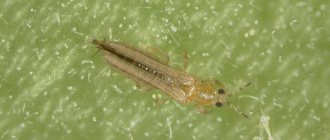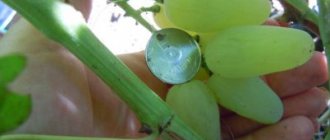If the dacha plot has changed a lot during the day: some piles of earth and strange passages have appeared, several vegetable bushes have disappeared, then it’s time to sound the alarm. There is no doubt that the garden was attacked by a mole rat - a cunning, enterprising animal that strives to pack the entire harvest into its pantries.
Description and features
The mole rat belongs to the category of rodents. In the process of evolution, he completely adapted to life underground, which affected his appearance:
- it has a small body, up to 32 cm long;
- the weight of the animal can reach 1 kg;
- ears are missing;
- the paws and tail are short, therefore practically invisible;
- the body is covered with soft dark fur;
- the eyes atrophied and lost the ability to see. Due to the folds of the skin, they became completely invisible.
The mole rat in the photo looks like a mysterious and shy creature.
Where does it live?
The giant mole rat has a small habitat:
- northeastern Ciscaucasia;
- in the areas of the lower reaches of the Terek, Sulaka, Kuma rivers;
- Tersko-Sulak and Tersko-Kuma lowlands (Dagestan);
- Guryev region (northeast);
- Aktobe region (west);
- Astrakhan region;
- Kara-Agach;
- eastern side of the Ural River.
What is the difference between a mole rat and a mole?
Some people mistakenly confuse these rodents with moles, but they are completely different animals. There are two main differences between them:
- The mole rat is much larger.
- The mole builds its tunnels with the help of its paws, but the second one has them poorly developed and has small claws, so it carries out construction work thanks to its front incisors.
- Moles feed on insects, and mole rats prefer roots and plant stems.
Kinds
In nature, there are several species of rodents that differ in color, size and place of residence:
- The common or South Russian mole rat has a gray-brown color. It belongs to the most common species. Lives on the territory of Moldova, Ukraine, Russia. Its soft skin is beginning to be used for making fur coats, but not in large quantities, which is why the common mole rat is not yet listed in the Red Book as an endangered species. It is also characterized by a stable population, thanks to which the number of these animals is maintained.
- The giant mole rat is the largest representative, weighing up to a kilogram. It has a light gray or brown coat color. Older individuals have white spots on the head and body. This species is characterized by poor reproduction, which is why it is included in the Red Book of Russia and the International List of Nature Conservation.
- The sandy representative is similar in appearance to its giant relative. Prefers to live in the forest-steppe and near the Dnieper. The rodent is also under protection.
- The Podolsk species is relatively small in size. It is on the verge of extinction and is therefore considered an endangered species.
- The white-toothed is the smallest rodent, whose length barely reaches 20 cm. Its characteristic dark brown color. The mole rat lives in Turkey, Ukraine, Moldova, Romania, Bulgaria, and Greece.
- The Bukovinian representative is slightly different from other species in the shape of its head. This species is found in European countries.
Giant mole rat - Spalax giganteus
Today, the most famous rodent-digger is the mole. And such a representative of the fauna as the giant mole rat remains little known, although it is not inferior in size to the mole. Its brothers (lesser mole rat, common mole rat and sand mole rat) are more common and there is more information about them. The sand mole rat is most similar to the giant mole rat in terms of appearance and biology. This animal is also a very interesting species and has its own characteristics that distinguish it from other representatives of rodent-dwellers.
Sand mole rat
Lesser mole rat
Common mole rat
Lifestyle and habitat
The family of rodents, depending on their habitat, is divided into 4 species, which prefer to live in the desert, forest-steppe, steppe and on the outskirts of forests. They are widespread in Europe, Asia, and Africa. Animals spend almost their entire lives underground. There they set up entire labyrinths, where they feel very comfortable.
An interesting fact is that fleas that parasitize rodents have also evolved and lost their vision. Soils of moderate density are suitable for mole rats. They avoid clay and sandy soil. Rodents choose pastures that have lush vegetation. are often found in the garden .
Features of housing construction
Animals dig out their burrows with their teeth. Even the head is involved in the construction of the labyrinth. The animal bites into the soil with its front teeth and pushes out excess soil from its home using its spade-shaped head. The lower jaw is also adapted for construction work. Thanks to the muscles, the incisors can move.
Due to the construction of the tunnel, the front teeth are ground down, but they quickly grow back, so the construction is even useful for the underground dweller. Individuals who live in captivity suffer greatly due to overgrown incisors. Because of them, mole rats cannot close their mouths.
The animal’s nose is also adapted for construction work. It is covered with keratinized skin, which protects it from mechanical injury when tearing up the ground. On one hectare you can find from 2 to 10 individuals. The animals actively build labyrinths in the spring, and from the summer they lead a more passive lifestyle. The underground dweller does not go into hibernation.
The warm-blooded mole rat builds its housing in several tiers:
- First comes the block, which is located at a depth of 20-30 cm. It is called the food block. The animal stores food reserves in it.
- The second block is located at a depth of about 4 meters. It contains a storage room, summer and winter nests.
In winter, the labyrinth is closed with earth and does not open until spring. One tunnel covers an area of up to 450 m. It contains about 10 storage rooms. If there is a lot of earth on the surface, the animal breaks out a new exit. It is always closed during the daytime. The animal becomes active at night and in the afternoon.
Underground inhabitants lead a solitary lifestyle. They diligently protect their territory from other individuals. In the event of an invasion, clashes occur between males, which can result in the death of one of them.
How do common mole rats live?
An ordinary mole rat, in short, spends its entire life, which is an average of 2.5-4 years, underground, digging complex tunnel systems and obtaining food. Most of all, the animal loves the roots, tubers and bulbs of plants, but it can also feast on stems and leaves. About 10 kg of food supplies must be prepared for the mole rat for the winter. At this time of year, its vital activity noticeably decreases, but the rodent does not hibernate.
The optimal population density of the common mole rat is 3 individuals per hectare, but this number can reach up to 20. With the help of sharp incisors and paws, the animals dig through a branched two-tier system of burrows. The upper tier lies at a depth of 20-25 cm, and the lower one, where the mole rat forms galleries for nesting and storing food supplies, is at a depth of 3-4 m. The external holes are not permanent, but are formed only in order to bring dug up earth to the surface .
Reproduction and lifespan
Mole rats live from 2 to 9 years. Life expectancy depends on their living conditions. The number of animals is negatively affected by loosening the soil, drought and excessive moisture. Mole rats have few natural enemies, since they spend almost their entire lives underground. They are hunted only by the steppe polecat, which penetrates into their home. When young animals settle on the surface, they can become prey for a fox or a bird of prey.
Despite their solitary lifestyle, during the breeding season rodents form families, which consist of a male and two females. Individuals that live in the neighborhood converge with each other. The male makes a passage underground to the female, who during the mating season creates certain sounds, inviting him to her.
In such a family, cubs appear one after the other. One female gives birth in the first year, and the other in the second. Between February and May, 2-3 babies are born. A newborn is born without fur and its weight reaches only 5 grams, but the baby grows quickly.
When the young animals turn one year old, the cubs are settled into tiers - the girls move to the top, and the boys remain on the bottom. When they turn 3 years old, they are considered adults and begin an independent life.
What is a mole rat?
The mammal is a rodent and belongs to the mole rat family. The body of the animal has an elongated shape. The wide, flat head, which is compared to a shovel, blends smoothly into the body. The ears are hidden under the fur. The short tail is covered by thick skin. The bare nose, covered with a layer of keratinized skin, protects the animal from injury.
The mole rat has no vision at all. Thick skin and coarse hairs cover the eyes, depriving the rodent of the ability to perceive light. All teeth, except two large incisors, are covered with multifold lips. The animal digs the ground with its protruding incisors. With its five-toed paws, it throws away the soil like a scoop. The forelimbs are shorter than the hind limbs. With a weak voice, the animal makes quiet sounds, similar to a squeal.
The thick fur of young individuals is painted silver; in adults, the fur is darker, with a noticeable tint of gray and brown shades. The hair on the abdomen and head is lighter than on other parts of the body. White spots may appear on the abdomen, and a vertical white stripe or cream spot may appear on the back of the head and forehead. The mouth is surrounded by blond hair.
Harm of mole rats to humans
There is a difficult relationship between rodents and people. Animals cause great damage to summer cottages and cause colossal losses to farmers. One animal can destroy an entire season's harvest. He makes large stocks in his pantries, stealing vegetables from summer residents and farmers. In a day, the pest is able to drag away 6 bushes of root crops.
Excavated underground labyrinths also cause a lot of trouble. A summer cottage with heaps of earth piled up is not a very attractive sight. If you step on an underground passage, you can easily fall into it up to your ankles. The inconvenience of tunnels is also felt on field roads, which the animal mole rat also does not avoid.
Methods of pest control
In the fight against mole rats, poisons that are intended for baiting rats and moles, traps, traps and cats are actively used. The use of poison remains the most effective method in the fight against rodents.
Chemicals must be used with great care. After all, they can also attract curious or hungry pets. It is also necessary to take into account the degree of toxicity of the substance used, because it can get into the soil and cause harm to the owner.
The following pesticides are very popular among farmers:
- "Brodifan" is available in liquid form. They impregnate the bait; 1 kg will require 20 g of Brodifan. On the 4th day after consuming the poison, mole rats will begin to experience attacks of suffocation. They can come to the surface and die over time.
- “Testox” is produced in the form of red briquettes, weighing 10 g. They have a pleasant aroma of peanuts, sunflowers, vanilla and cheese. Its action is similar to the drug Brodifan. On the 4th day, the animals experience attacks of suffocation, and on the 6th day they die due to paralysis of the respiratory system.
- The drug "Storm" is considered one of the most effective. It was developed by the German company BASF. The substance is produced in the form of blue briquettes. “Storm” has a strong aroma that will definitely attract pests.
Is it worth using traps?
Mole rats have excellent intelligence, thanks to which they deftly avoid traps and various kinds of traps. Elderly individuals sense danger especially well. It is almost impossible to lure them into a trap.
The situation is further complicated by the fact that the animals live deep underground, where it is simply impossible to reach with a trap. In any case, you need to try and use some cunning. Suddenly the underground dweller loses his vigilance and falls into a trap.
To set a trap, you need to find a tunnel dug by the rodent and dig a hole in it, at least 1 meter deep. The mole mole does not like drafts, so it will crawl out of the hole to seal the passage, and this is where the installed trap comes in handy, which needs to be covered with plywood on top for camouflage.
The rodent has a good sense of human odor, so you need to wear gloves when setting the trap. All parts of the structure should be treated with onions, which with their pungent aroma will cover the human smell.
Interesting facts about the rodent
Interesting facts are known about mole rats:
- One individual digs a hole 2.5 m deep in an hour and throws 75,000 cm3 of earth onto the surface; builds 71 earthen piles on the site in a month.
- Mole rats are often aggressive towards their brothers. Sharp attacks against small animals are stopped by the defenseless squeak of the cubs. A duel with an adult opponent can end in the death of a weak individual. When fighting, animals bite each other's ears and nose.
- Smooth fur allows the mammal to move easily inside the tunnel.
Pictures of mole rats evoke surprise and interest. Thrifty furry animals are touching when they are told about in fairy tales. In real life, a rodent creates problems for a gardener. If you ignore the appearance of the first holes, a large colony of mole rats will appear in your dacha. False humanity can lead to loss of harvest and create chaos on the site. To evict a pest from a garden, several methods should be used simultaneously.
Repellent methods of control
Animal lovers who feel sorry for destroying mole rats can use repellents. Although they will not destroy the enemy, they can force them to leave the area. Pests have a good sense of smell, so you can throw a piece of fabric soaked in kerosene or diesel fuel into their hole. The underground inhabitants will perceive them as a threat and leave the area.
Mole rats cannot tolerate the smell of wormwood, elderberry, mint, medicinal blackroot and imperial hazel grouse, the unpleasant aroma of which comes from the bulb itself. If you plant such plants on a site, you can hope that the rodent will bypass it. Mole rats do not like excessive noise, so you can make your own repeller that will help drive them out:
- A piece of reinforcement is driven into the ground so that 40 cm remains above the surface.
- They put an empty metal can on it and wait for windy weather.
- From the gusts, the bank will begin to hit the reinforcement, and an unpleasant noise will spread underground.
Special devices that emit ultrasound are effective in pest control. When buying such a device, you need to pay attention to the following points:
- Radius of action. It will not be possible to save the site with the help of one device. You need to immediately purchase several ultrasonic emitters.
- Availability of settings. It must be possible to change frequencies. Otherwise, rodents will get used to them and stop avoiding the area.
The advantage of such equipment is that it repels other pests. The site will remain under reliable security.
House hunters
Hunting breeds of dogs that are accustomed to attacking underground can help in exterminating mole rats. Dachshunds and spaniels are well suited for such purposes. If a cat catches rats, it can also be taught to hunt mole rats. Especially when we are talking about a cat mother who is ready to do anything to protect her babies.
To lure out the pest, you need to dig up its labyrinth, at least a meter deep, and dig another hole about 40 centimeters near the exit. When the rodent appears to bury the failed exit, a cat is seated in the prepared hole, which will show its hunting abilities. As you can see, there are many methods to combat mole rats. Some of them are humane, while others are cruel.
With their help, you can destroy pests or ensure that they leave the area. Considering that they have poorly developed limbs, the animals will not go far, but will simply move to their neighbors. On the one hand, rodents cause great damage to garden plots, and on the other hand, they are listed in the Red Book. Therefore, how to get rid of a mole rat , whether to kill it or not, is a personal matter for each summer resident.
Harm in the garden
The appearance of a rodent in a garden or summer cottage is a real problem. This creature can deprive you of your potato, carrot and beet harvest. A logical question arises - how to get rid of the voracious mole rat in the country house or garden. It eats plant tops and stores root crops for the winter. One adult can ruin the work of an entire summer season. More than 10 kg of root crops were found in the burrows, and the rodent is satisfied with more than one vegetable storehouse. The more well-groomed the garden, the greater the desire of these animals to settle on it.











